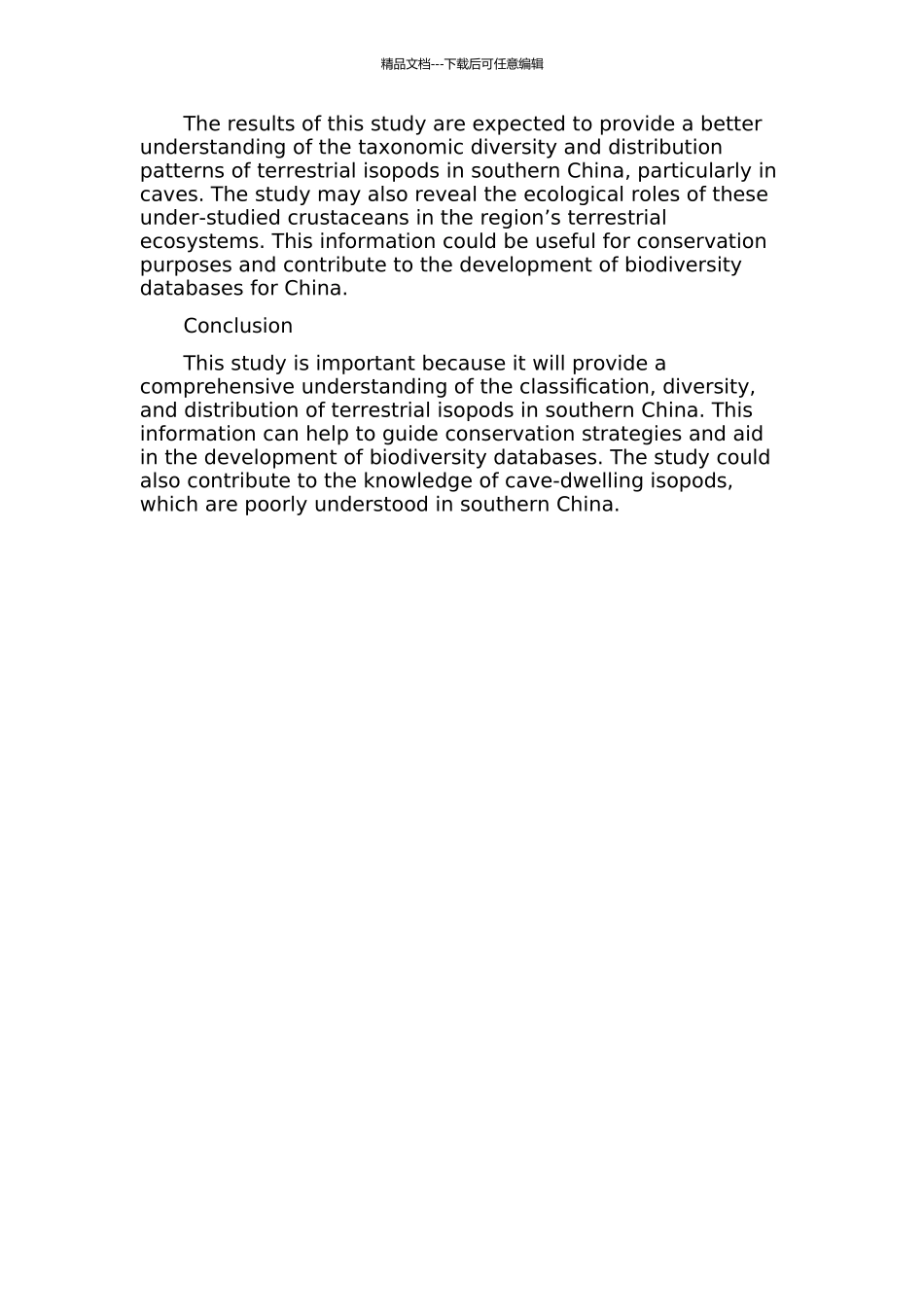精品文档---下载后可任意编辑中国南方数省区洞穴陆生等足类分类讨论的开题报告IntroductionTerrestrial Isopods, also known as pill bugs, sow bugs, or roly-polies, are a group of crustaceans that have adapted to life on land. They are commonly found in a wide range of habitats, including leaf litter, soil, and caves. In China, there are many species of terrestrial isopods, but their taxonomic diversity and ecological roles are poorly understood. This study aims to investigate the classification of terrestrial isopods in several provinces and regions in southern China, with a particular focus on their cave-dwelling species.ObjectivesThe main objectives of this study are:1. To collect terrestrial isopods specimens from caves and other habitats in Guangxi, Guizhou, Yunnan, and Sichuan provinces in southern China;2. To identify and classify the collected specimens based on morphological and molecular characteristics;3. To investigate the distribution patterns of terrestrial isopods in different habitats and to compare the diversity and abundance of species between different regions;4. To explore the ecological roles of terrestrial isopods in caves and other terrestrial ecosystems in southern China.MethodsFieldwork will be conducted in selected caves and other habitats in Guangxi, Guizhou, Yunnan, and Sichuan provinces. Samples of soil, leaf litter, and other substrates will be collected using a trowel, and pitfall traps will be used to capture surface-dwelling isopods. Cave-dwelling isopods will be collected using a suction device or a soft brush to avoid damaging their fragile bodies. The collected specimens will be counted, measured, and fixed in 75% ethanol for morphological observations. DNA sequences will be obtained from some of the specimens to facilitate molecular identifications.Results精品文档---下载后可任意编辑The results of this study are expected to provide a better understanding of the taxonomic diversity and distribution patterns of terrestrial isopods in southern China, particularly in caves. The study may also reveal the ecological roles of these under-studied crustaceans in the region’s terrestrial ecosystems. This information could be useful for conservation purposes and contribute to the development of biodiversity databases for China.ConclusionThis study is important because it will provide a comprehensive understanding of the classification, diversity, and distribution of terrestrial isopods in southern China. This information can help to guide conservation strategies and aid in the development of biodiversity databases. The study could also contribute to the knowledge of cave-dwelling isopods, which are poorly understood in southern China.

